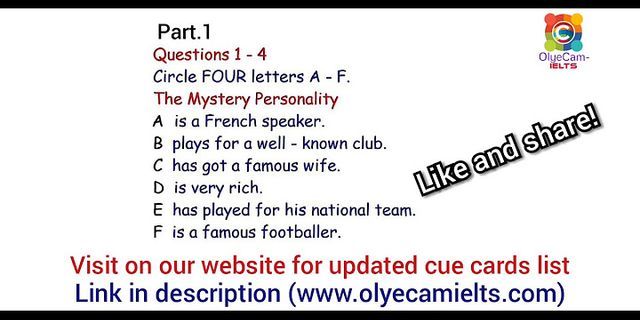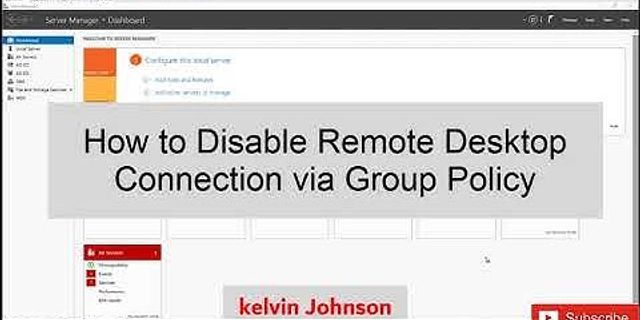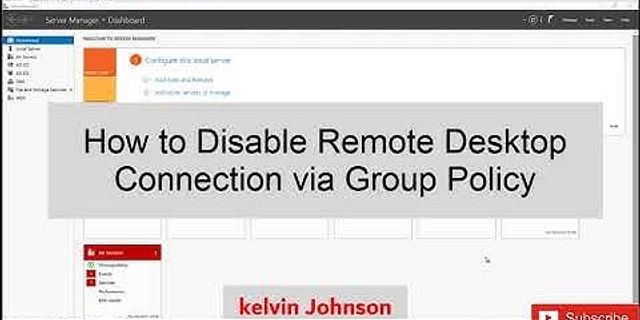(FREE DOWNLOAD AVAILABLE BELOW) Show By Ron Nash, author of The Power of We and And What About You? When I ask how many participants in one of my workshops have taken a speech class at some point, most of the hands go up. I follow that with, “How many have taken a listening course?” Few, if any, hands go up. This is because speaking is generally accepted as the be-all and end-all of oral communication skills. The whole idea of listening is taken for granted; all that I required as a new teacher who talked incessantly in my role as Minister of Information was that students sit up and “pay attention,” whatever that means. Listening was less an art in my classroom and more posture-related. When students work together in pairs, trios, or larger teams, they must learn to actively listen as they attempt to understand what their teammates are saying. Active listeners “gently attend to another person,” says Costa (2008), “demonstrating their understanding of and empathy for an idea of feeling by paraphrasing it accurately, building upon it, clarifying it, or giving an example of it” (p. 33). Empathetic listening is an active—not a passive—pursuit. I have seen students work well together in teams, and I have seen well-meaning groups get off to a good start, then stumble and fall apart because they did not do the ground work up front. This groundwork is the responsibility of the teacher. Teachers who want their students to work in teams would do well to begin by helping them develop speaking and listening norms while working in pairs. Students can hide in groups, but they cannot hide in pairs, and students who learn to work well together in pairs can then translate that success into effective collaboration as members of quartets or even larger groups. Students can hide in groups, but they cannot hide in pairs, and students who learn to work well together in pairs can then translate that success into effective collaboration as members of quartets or even larger groups. Click To TweetStudents who work in pairs frequently can hone communication skills under the direction of the classroom teacher, but, according to Zwiers and Crawford (2011), “Conversation is much more than talking and listening. There are many manners, behaviors, and nonverbal signals that play key roles” (p. 41). In every pair of conversationalists there is a listener and a speaker at any given moment. The listener’s role is not one of marking time while deciding what he or she wants to say next. Listeners ought to serve as active and effective supporters of their partners. Here are 8 foundational norms listeners can display to move the conversation along and support the speaker: 1) Make appropriate eye contactA partner in the role of listener who simply stares at the speaker is quite likely to drive the latter to distraction. I recommend making eye contact for a few seconds (3 to 5), then looking thoughtfully away before quickly making eye contact again. Listeners want to support speakers, not drive them to seek a restraining order. 2) Attend fully to your partnerMy wife and I once sat across from a teenager and her aunt at a sidewalk cafe. After a minute or so of watching her niece attend to her cell phone, she said, “Don’t you want to talk to your Aunt Millie?” My wife and I looked at each other as if to say, “Which one of us wants to grab the cell phone and throw it out into the street?” Students who are used to relating to screens more than to human beings need to be taught to attend fully to a partner, forsaking all electronic instruments during the course of the conversation. Attending fully to one’s partner demonstrates respect, and sends this message: “I care about what you are saying right now.” That is an important message for a speaker who is trying to express or explain something. 3) Paraphrase in order to clarify somethingAnother sign of listener-to-speaker respect is paraphrasing. Costa (2008) suggests that listeners avoid “I messages” along the lines of, “What I think I hear you saying…” Instead, the listener can send the signal that a paraphrase is coming by saying, “You’re suggesting…” or “So, you are thinking…” or something similar (p. 135). A paraphrase tells the speaker that the listener understands, or is trying to understand, what the speaker is saying. 4) Take care not to monopolize the conversationAs a Boomer growing up in the 1950s, I remember a meal called dinner, where we sat and talked for anywhere from 30 to 45 minutes or more, depending on the occasion. This was on-the-job training for learning to take turns and tune in to the perspectives of family members, friends, and neighbors who were our guests for the meal. I grew up with my grandparents, and my grandmother served in the role of teacher as we developed social capital during those meals at home. 5) Use positive and supportive body languageGoleman and Senge (2014) remind us that our brains are set up for face-to-face contact, and one thing texting and tweeting lack is the presence of body language that contributes to continuing understanding, the clearing up of possible misconceptions, and the smooth running of conversations. Arms folded in front of the chest, the absence of eye contact, and facial expressions that say, “Move this along, will you?” all live in the category of unforced errors that can be avoided when teachers take the time to talk about—then practice—paired conversations where body language is the topic. 6) Avoid distractions that might derail the conversationUnless there is a specific reason for students to have their cell phones in hand while conversing with a partner, those instruments should be out of sight. Sneaking repeated glances at the clock on the wall or at a wristwatch will not go unnoticed to the speaker. I once watched as a student looked down, then tie his shoe while his partner was talking. Active listening requires a level of concentration on the part of the listener that says, “I’m with you.” 7) Don’t be afraid of silenceAs a first-year teacher, I taught as I had been taught in high school and college. That is, as a U. S. history teacher, I talked incessantly in an attempt to “cover” topics, decades, wars, and depressions. It must have been depressing for my students to have to listen—or pretend to listen—to my ramblings. I was in a hurry, and I gave them no time for reflection in the form of conversations that might have caused them to actually understand the subject du jour. Let your students know that silence is a powerful thinking tool, and the listener can look away briefly and pause before joining the conversation in order to give both partners time to think a bit and reflect on what was just said. 8) Thank your partner for sharing when you are finishedThis, too, honors your partner, and it takes only a moment and a handshake, a fist-bump, or a gentle high five. Students who get used to doing this on a regular basis may well find it carries over into private conversations outside the classroom.  These behaviors are all part of a listening skill set that will keep partners—and teams—working together in a collegial and congenial atmosphere. Collaboration requires participants, not attendees. Effective teamwork begins with students learning to listen and otherwise communicate effectively with a single partner, then evaluating that process before moving on. One sixth-grade teacher has a set of six collaborative norms that her students revisit at the end of every project, and sometimes, out of necessity, during the process. When kids of any age learn to communicate effectively and collaborate using a set of accepted and practiced norms, teachers can expect a much higher rate of success—along with fewer chaotic classrooms and sleepless nights.  Costa, A. (2008). The school as a home for the mind: Creating mindful curriculum, instruction, and dialogue. Thousand Oaks, CA: Corwin.Goleman, D. & Senge, P. (2014). The triple focus: A new approach to education. Florence, MA: More Than Sound.Zwiers, J. & Crawford, M. (2011). Academic conversations: Classroom talk that fosters critical thinking and content understandings. Portland, ME: Stenhouse.
Many middle and high school students miss out on opportunities to improve their active listening comprehension skills, partly because teachers assume they already have them. And because teachers at the upper levels regularly think that elementary school curriculums teach these basic skills , they often don’t have a firm grasp on how to teach listening skills to these older students. And listening comprehension strategies designed for younger children tend to fall flat with high school students. Though it is one of the key strands in most standards compilations, fewer than half of the states assess upper-level students’ listening skills unless they happen to be in an ESL program. But this is changing, especially as more exams move to computer-based formats that allow assessment of the full range of tasks. Teachers can use listening comprehension formative assessments to monitor listening skills over time, but we are getting ahead of ourselves. We know that there are many reasons to teach listening. So, where do middle and high school teachers start? Teacher behaviors that encourage listeningWhile the following are examples of implicit strategies to teach listening, their deliberate implementation can reap real rewards in improving listening comprehension with tweens and teens. Be a good exampleStudents don’t often look at their teachers as “real people.” They need to be able to get to know their teachers. Authentic interactions happen when both parties have a sense of who the other is. It’s natural for teachers to listen to students solely to provide a response. But older students are better at picking up the more minor nonverbal cues that indicate listening purpose. It’s pretty obvious to students when teachers are just trying to respond rather than listening with intent or care. Taking the time to actually listen to a student - a form of informational listening - helps to form excellent teacher-student relationships as well as to provide a model for students to follow. If they feel valued in their interactions with their teachers, they are more likely to employ some of those same strategies in their own exchanges. Encourage listening responsibilitySome teachers find it helpful to set their expectations for listening comprehension early. With an effort to be as clear as possible with directions and explanations, commit to only saying them once. It encourages students to take responsibility for paying attention. This doesn’t mean leaving them with no guidance, however. Some teachers have found success with a strategy called “three before me,” which tells students to rely on and listen to each other before going to the teacher. If a student missed a direction, they’re encouraged to ask a classmate (or three) to help each other with this responsibility before asking the teacher. In a virtual classroom, this might be assigning a student (or even a pair of students) to monitor the chat bar and answer procedural questions that classmates are posing. Another option might be creating semi-permanent learning groups that students grow comfortable with where they can ask questions and gain clarification. Students’ ability to be accountable for the information they receive increases independence and self-sufficiency, often making classrooms - even virtual ones - run more smoothly. Keep things randomCalling on students to answer questions has been a practice fraught with issues for teachers and often cited as “terrifying” for some students. But it does provide accountability to listening in the classroom. Teachers need to be transparent in how they choose students, so names on popsicle sticks or random name choosers are great ways to show students that it is genuinely random. They can also provide optional supports for students who might not know the answer to the question or get overly anxious. Teaching listening with classroom activitiesTeens really do pick up on skills that are modeled for them, so teachers who include implicit listening opportunities, like those above, will definitely see improvements. However, planning specific opportunities to teach listening comprehension skills explicitly is where teachers will see the most substantial returns. Incorporate tactile signalsWhen students are asked to listen critically, they can visually demonstrate their thoughts as they’re listening. In a traditional classroom, students could go to a particular area of the classroom based on their stance or answer choice to a given question. Groups in each area could then have a quick discussion about their choice. For instance, a class listening to an article about whether or not academic requirements for student-athletes are discriminatory might have students voice their opinion in reaction to the article by going to different corners assigned beforehand: fully agree, kind-of agree, kind-of disagree, fully disagree. Student groups could then have discussions to present their ideas or to set up a debate. In virtual classrooms, teachers can have students hold up a thumb or finger, use polls or extensions like Nod that allow student reactions to listening tasks. However, providing real-time opportunities for students to show their listening comprehension in ways other than writing responses encourages student engagement exponentially. Let students talk to each otherNot just to the teacher, but to each other. Collaborative groups allow students to interact with each other to complete tasks. In a remote class, breakout rooms enable students to talk with each other (and listen). Teachers often think of whole-class or partial-class discussions as avenues for students speaking, but the flip side of speaking is listening. These exercises should be designed to encourage students to demonstrate that they listened critically to their classmates. But even small, purposeful discussion tasks like turn-and-talk offer the advantage of providing authentic opportunities to demonstrate listening. In this video, Abby Osborn explains how she has students speak and listen to each other in breakout rooms to build on their ideas after listening to an audio story. “Don’t take notes. Make notes.”Re-structuring assignments can increase student listening engagement, too. For instance, many teachers offer guided notes. Formerly mainly a support for struggling students, they’ve become a staple of many classrooms because teachers have bemoaned that students don’t take notes well. But scaffolds like guided notes are only helpful in increasing student capacity if they are gradually withdrawn. Note-taking is an informational listening skill that rarely gets taught explicitly, but it’s an easy modification to include this vital skill in other content lessons. Helping students “make notes” of their own instead of always “taking notes” in teacher-constructed graphic organizers encourages the students to take responsibility for listening to the teacher (or video, podcast, or broadcast) and their note-taking decisions. But students shouldn’t be left entirely to their own devices! It’s essential to go over those student note-taking decisions and talk about why some might be great choices, and some might be not-so-great. Students who chose the wrong main idea, for example, might find it valuable to review not only what the teacher intended as the main idea but also why they chose something different. Use technology toolsThere are some fantastic tech tools that support teachers’ efforts to include more listening instruction. Peardeck and Poll Everywhere are great ways to make lectures and class discussions more engaging with student input and quick data. Flipgrid allows students to post videos of themselves for asynchronous discussions or presentations that require listening. And online services like EdPuzzle (for video listening) and Listenwise (for podcasts and radio broadcasts) offer supplemental curriculum options to improve students’ listening comprehension skills. Listenwise has even made a list of creative ways to blend classroom apps to encourage further student engagement. Final Points To ConsiderThere are two specific points for teachers to keep in mind as they bring student listening comprehension activities into the classroom. Encourage good listening habitsStudents are often tempted to do other things while they’re listening - as if listening is always a secondary activity. For instance, they may have music playing in the background or be fussing with their notes. But encouraging students to listen with no distractions before completing assignments is a great way to help build good listening habits. This teacher makes that distraction-free listening part of the lesson. Teachers can also structure lessons to build listening stamina within their daily instructional practices. Begin with shorter passages and work up to longer audio pieces. Scott Petri, a California teacher who uses Listenwise in the classroom, explains that “kids don’t really have the idea that they can manage their attention spans and that they can focus in order to listen to something.” Building up to longer pieces encourages much more student success. |




















